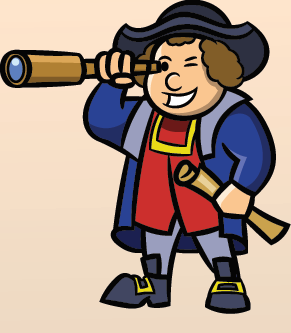1492 – Columbus Reaches the New World
After sailing across the Atlantic Ocean, Italian explorer Christopher Columbus suddenly sees a Bahamian island, believing he has reached East Asia.
Columbus was born in Genoa, Italy, in 1451. He worked as a seaman and then a maritime entrepreneur. He became obsessed with the possibility of pioneering a western sea route to Cathay (China), India and the gold and spice islands of Asia. At the time, Europeans knew no direct sea route to Southern Asia, and the route by Egypt and the Red Sea was closed to Europeans by the Ottoman Empire.
On August 3, 1492, Columbus set sail from Palos, Spain, with three small ships. On October 12, the expedition reached the land, probably Watling Island in the Bahamas. Later that month, Columbus sighted Cuba, which he thought was mainland China, and in December, the expedition landed on Hispaniola, which Columbus thought might be Japan. He established a small colony there with 39 of his men.
During his lifetime, Columbus led a total of four expeditions to the New World, discovering various Caribbean islands, the Gulf of Mexico, and the South and Central American mainlands, but he never accomplished his original goal—a western ocean route to the great cities of Asia. Columbus died in Spain in 1506 without realising the great scope of what he did achieve: He had discovered for Europe the New World which would help make Spain the wealthiest and most powerful nation on earth.
(Adapted from the History Website)

